
Cymbidium, commonly known as boat orchids, is a genus of evergreen flowering plants in the orchid family Orchidaceae. Orchids in this genus are epiphytic, lithophytic, terrestrial or rarely leafless saprophytic herbs usually with pseudobulbs. There are usually between three and twelve leaves arranged in two ranks on each pseudobulb or shoot and lasting for several years. From one to a large number of flowers are arranged on an unbranched flowering stem arising from the base of the pseudobulb. The sepals and petals are all free from and similar to each other. The labellum is significantly different from the other petals and the sepals and has three lobes. There are about fifty-five species and sixteen further natural hybrids occurring in the wild from tropical and subtropical Asia to Australia. Cymbidiums are well known in horticulture and many cultivars have been developed.

Endoclita is a genus of moths of the family Hepialidae. There are 60 described species found in eastern and southeast Asia and the Indian subcontinent.

Theretra silhetensis, the brown-banded hunter hawkmoth, is a moth of the family Sphingidae described by Francis Walker in 1856. It lives in Indo-Australia, India, Sri Lanka, Papua New Guinea, East Australia, Solomon Islands, Fiji Islands, Vanuatu Islands.
This page lists orchid species according to their respective distribution range.

Hadennia is a genus of moths of the family Erebidae. The genus was described by Moore in 1885.
Mecodina is a genus of moths of the family Erebidae first described by Achille Guenée in 1852.

Pangrapta is a genus of moths in the family Erebidae. The genus was erected by Jacob Hübner in 1818.

Paracolax is a genus of litter moths of the family Erebidae. The genus was erected by Jacob Hübner in 1825.
Sinarella is a genus of moths of the family Erebidae. The genus was erected by Felix Bryk in 1949.

Dilophodes is a genus of moths in the family Geometridae.
Microcalicha is a genus of moths in the family Geometridae first described by Sato in 1981.

Herochroma baibarana is a species of moth of the family Geometridae first described by Shōnen Matsumura in 1931. It is found in China, Taiwan, Sri Lanka, the north-eastern parts of the Himalayas, Peninsular Malaysia, Sumatra and Borneo.

Rhagastis albomarginatus is a moth of the family Sphingidae.
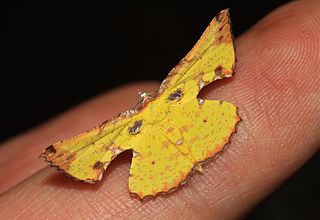
Corymica pryeri is a species of moth of the family Geometridae first described by Arthur Gardiner Butler in 1878. It is found in Japan, Taiwan, the north-eastern Himalayas, Sumatra, Borneo, New Guinea and possibly Queensland, Australia.

Garaeus apicata is a moth in the family Geometridae. It is found in the north-eastern Himalaya, Burma, Sumatra, Borneo and Taiwan.
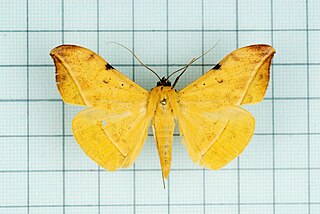
Hamodes propitia is a moth in the family Erebidae first described by Félix Édouard Guérin-Méneville in 1831. It is found in the north-eastern Himalayas, Myanmar, Thailand, Borneo, Sumatra, from the Philippines east to Queensland, the Carolines (Palau) and the Solomon Islands.

Horithyatira decorata is a moth in the family Drepanidae. It is found from the north-eastern Himalaya and Nepal to southern China and Taiwan.
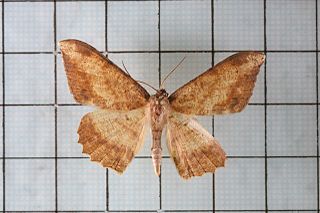
Luxiaria amasa is a moth in the family Geometridae first described by Arthur Gardiner Butler in 1878. It is found from south-eastern Siberia to Korea, Japan, northern India, Nepal, Taiwan, Borneo, Sumatra, Java and Sulawesi.
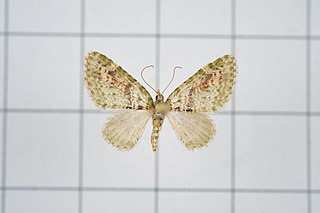
Chloroclystis rubroviridis is a moth in the family Geometridae. It was described by Warren in 1896. It is found in the north-eastern Himalayas, Burma, Taiwan and on Borneo, Peninsular Malaysia and Java. The habitat consists of upper montane areas.
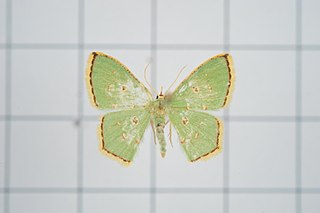
Comostola subtiliaria is a moth of the family Geometridae first described by Otto Vasilievich Bremer in 1864. It is a widespread species which is found in Korea and adjacent parts of Siberia, Japan, Borneo, Sumatra, India, South China, Taiwan, Borneo, Sumatra, and Sri Lanka.

















